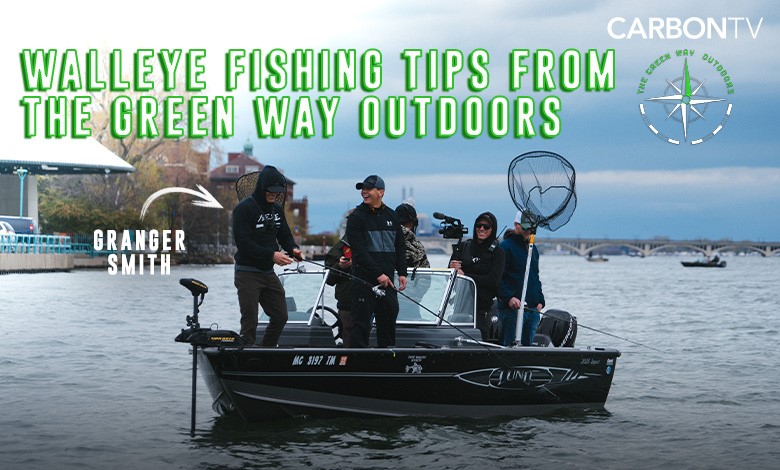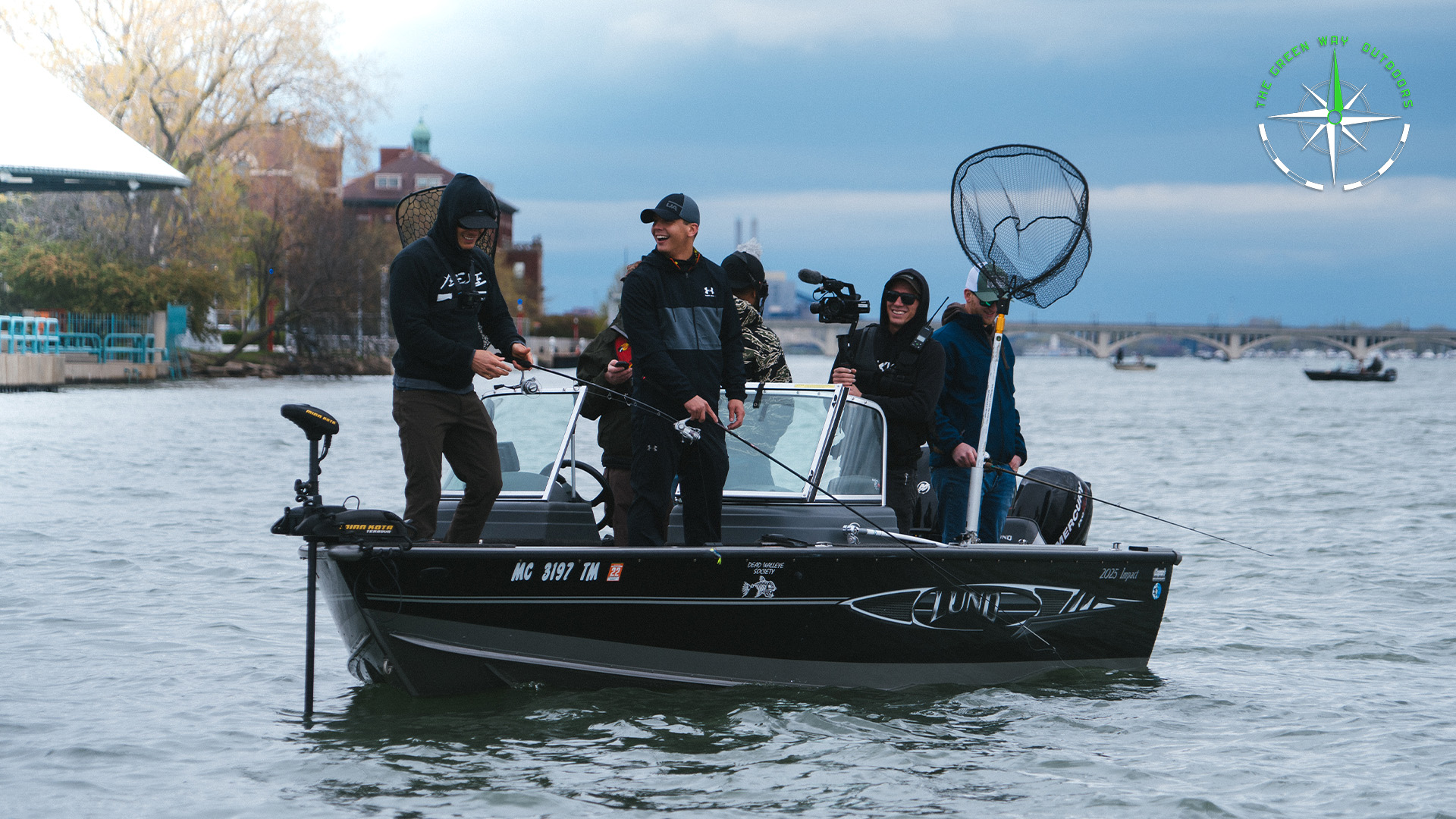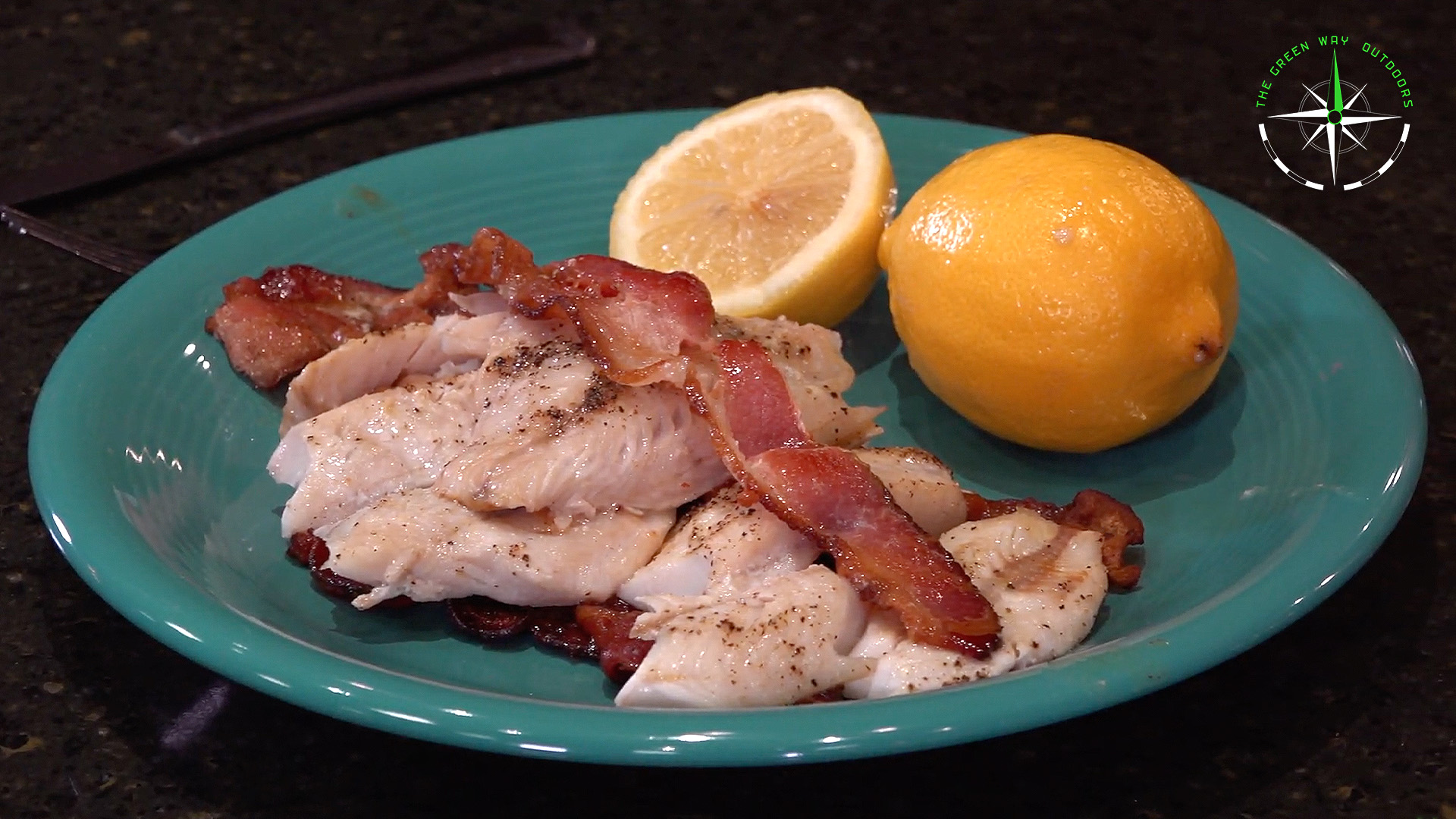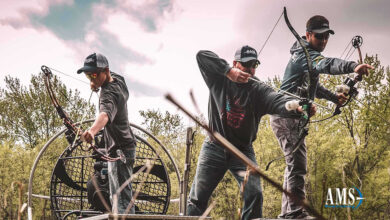
The Green Way Outdoors host, Kyle Green, shares some tips on Walleye Fishing in this Q&A – from catching them to cooking them!
Q1: What is the best way to fish for walleye?
A: It always amazes me when I travel the world and see the specific boats people use on different bodies of water. On some lakes, everyone has a pontoon boat. You better have a deep V boat on other lakes to handle the waves. In Northern Michigan, I often see small flat-bottom jet boats in the Manistee River. Walleye’ fishing tactics are similar in this way. They are normally oddly specific for the type of water you are fishing in.
Q2: What size hooks for walleye?
A: Nearly everyone uses large gumball jigs tipped with plastic minnows on the Detroit River. They bounce the jigs off the bottom while floating downstream. Meanwhile, fishermen on the bay like to run planer boards with 4-inch Rapalas while trolling roughly 2 miles per hour. My favorite tactic and location for Walleye Fishing is the St. Clair River, using bottom bouncers and crawler harnesses. This is probably my favorite because it has given me the most success. You can walk into any Bass Pro Shops or Cabelas and find many crawler harness options. I typically go with the biggest blade I can find and ensure the harness has at least two hooks behind it. Normally, the hooks are size two and have a wide gap in them. You put the head of the nightcrawler on the hook closest to the line, the midsection on the second hook, and let the tail trail behind freely. Generally, I tend to choose the bigger blades because they can catch current easier, and you’re less likely to have your spinner fail you and just ride along the bottom.
Q3: What pound test line should I use for walleye?
A: Depending on the situation, I tie the crawler harness to a 2oz bottom bouncer and tie that to a 20lb big game line. I use line counting reels to know how many feet of line I have out. I drive my Tracker Targa boat at two mph, going with the current, using my electric trolling motor. Trolling at this speed, I let out the same amount of line as the water depth, plus 20%. For example, in 100 feet of water, I would let out 120 feet of line. This allows the bottom bouncer to hit the bottom but not dig into it. Your line should trail behind the boat at roughly a 45-degree angle. Then you just place the rods in the rod holder and wait for a rod to get slammed while you enjoy a cold pop and talk to your buddies.

Q4: Are walleye good to eat?
A: People who freshwater fish for walleye target them at least a few times per year. Why? They taste amazing! Their flesh is very mild, and people like their cooking versatility. It’s worth noting that on the Detroit River, walleye can have higher toxins and PCBs than in other locations. Do not let this scare you, because all fish do to some level. You can eat walleye from the Detroit River 12 times yearly if you follow the 3Cs.
- CHOOSE – Choose the smaller keeper-size fish. The big giant walleye are likely to have more fat, where the toxins are most prevalent.
- CUT – Cut away all fat from the fish. I also like turning my fillet over after skinning it and cutting away red meat along the back.
- COOK – Cook the fish in a way that allows the fat to drip away from the meat.
Q5: What’s the best way to eat walleye?
A: Unfortunately, because you have to cook it in a way that allows the fat to drip away, that eliminates frying it. But don’t worry; I have your back with a wonderful bacon-wrapped walleye recipe you will love. Enjoy!

Ingredients: 4 walleye fillets, 1/2 pound of bacon, -1 Lemon, the 1-fourth stick of melted butter 4-Tbsp Honey and 1-Tbsp Onion Powder – Salt and pepper, if desired
Directions: Preheat the oven to 400 degrees Fahrenheit (200 degrees Celsius). A 9×13-inch baking dish should be foil-lined. Make a bed of cooked bacon on the foil by only briefly cooking the bacon. Your fillets are on top of the bacon. Apply half a lemon’s juice to the fillets. Over the fillets, drizzle the melted butter. Place honey on top of each fillet. Add some salt, pepper, and onion powder. Cook in your oven for 12 to 15 minutes. Dish and Serve.
Be sure to check out The Green Way Outdoors and The Green Way Outdoors Podcast on CarbonTV!
You may also be interested in CarbonTV’s article: Easy & Delicious Walleye Recipes
_________________________________________________
For more information and to explore our content, visit our website at https://www.carbontv.com.
For more exciting outdoor content and updates, make sure to visit our blog at https://blog.carbontv.com.
_________________________________________________
Explore CarbonTV
Live Cams | Live TV | Shows | Films | Podcasts | CarbonTV Outfitter Services | Firearm Safety | Store

